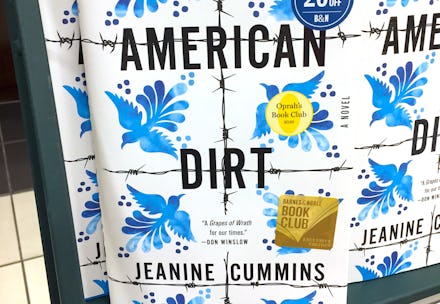Will publishers ever stop whitewashing BIPOC lives?

In case you forgot about the biggest literary scandal of last winter, New York just delivered a deep dive into the controversy behind American Dirt. The piece charts how the novel went from one of the most-hyped books in recent history to a widely maligned example of whitewashing in the publishing industry. But reporter Lila Shapiro also explains why American Dirt became a bestseller anyway — and it says a whole lot about the audiences publishers are trying to reach.
To recap: American Dirt concerns a Mexican mother forced to flee to America after a cartel slaughters her extended family. When the manuscript was first shopped around in 2018, publishers sensed the book was a heart-tugging thriller that’d appeal to white readers. “I remember telling my boss, ‘I feel like this is finally a book about immigration that people who have no interest in immigration will read,’” one book editor, who is white, told New York. Championed by Amy Einhorn, a powerful editor and publisher who worked on Liane Moriarty’s Big Little Lies and Kathryn Stockett’s The Help, the book soon picked up glowing blurbs from the likes of Salma Hayek, Stephen King, and, most crucially, Oprah Winfrey, who chose the novel for her book club.
One, er, setback that American Dirt’s publisher, Macmillan, had to navigate as it promoted its bonafide-hit-of-a-novel: the book’s author, Jeanine Cummins, is a white woman with no real ties to Mexico or the other Latin American countries that factor into her story. Instead of addressing the author’s gaze or even hiring a sensitivity reader (a now-common practice in the world of Y.A. literature) Macmillan tried to obfuscate this fact by playing up the writer’s personal relationship to her work. A New York Times profile identified Cummins as “white and Latina” (she had a Puerto Rican grandmother), and an editor’s note said her husband was a formerly undocumented immigrant (spoiler alert: he’s Irish).
When Latinx writers and activists like Myriam Gurba got their hands on the novel and realized that, on top of colonizing the immigrant experience, American Dirt wasn’t even very well-written, they started speaking out. Gurba criticized the book for leaning on “overly ripe” Mexican stereotypes, for the inaccurate Spanish in italics littered throughout the text, and the way it “positions the United States of America as a magnetic sanctuary.” The furor over American Dirt took on momentum when the New York Times critic Parul Sehgal blasted the book for “mauling the English language.” She didn’t necessarily take issue with the fact that Cummins was white and writing about Mexico, “but it has to be done well,” she told New York, adding she was “shocked at the lack of care.”
Thoughtlessness lies at the heart of the saga. From the publishing executives whose main objective is to move the most units (and middle-aged white women buy the most books) down to the press representatives embellishing Cummins’s identity to make her more enticing to the media, just about everybody seems guilty of erasure.
At least the debacle appears to have fostered some real change at Flatiron, the Macmillan imprint that published the book. It hired Nadxieli Nieto, a board member of Latinx in Publishing, as its editor-at-large and committed to investing in work by writers of color. Flatiron’s lead title for 2021 is Of Women and Salt, by Mexican and Cuban author Gabriela Garcia. She told New York magazine the backlash against American Dirt and Flatiron’s subsequent meetings with activists gave her the confidence to approach the publisher.
“I was able to be honest about what the process is like for a writer in this overwhelmingly white publishing industry, where my book is ushered through all of these different rooms of white people before it comes to fruition,” Garcia said.
Could publishers finally be learning from dustups like American Dirt? Recent trends in hiring at the top suggest a desire for change — so long as the bottom line stays just the same.